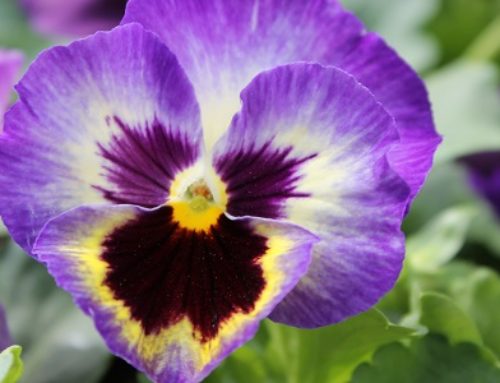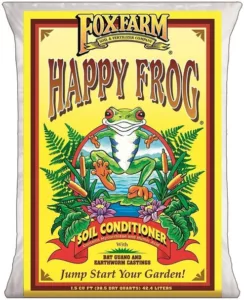
Vegetable Gardens: If you haven’t already removed your old vegetable plants from spring, now is the time to do so! Compost whatever does not have disease or insects, and discard the rest. This is your “window” to add amendments to your garden! Choose from Happy Frog Soil Conditioner, Coco Loco for raised beds, or Earthworm castings as amendments. Heirloom Soils Leaf Mold Compost is another quality amendment for use in gardens and other plantings. Compost will add needed nutrients and texture to your soil, improving moisture holding capacity, microbe activity, and production.
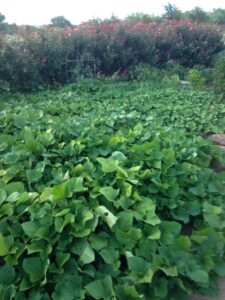
If you have not already done so, now is the time to be digging your sweet potatoes. Use care when digging the tubers, as the tender skins bruise easily and damage can result in decay in storage. Allow the tubers to dry for 2-3 hours, then store them in a dry area between 80-85 degrees for 10 days to two weeks. If no rain is expected, you may lay them out in the sun to cure and sweeten. After curing, store at a temperatures between 55-60 degrees with 85% humidity.
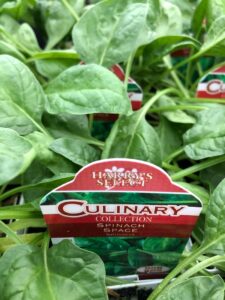
Plant Broccoli, Brussels sprouts, Collards, Cabbage, Leeks, Multiplying Onion, and Cauliflower from transplants this month through October. (Bulbing onions are planted in October from seed and from transplants in January). Add Happy Frog Jump Start (3-4-3) to the planting hole of new transplants to give them the nutrients needed for a good start. September through October plant Beets, Carrots, Swiss chard, Lettuce, Mustard Greens, English and Snap Peas, Radishes, Spinach and Turnips from seed. After seedlings have emerged, water weekly with Happy Frog Grow Big (6-4-4) or Wholly Mackerel (3-1-0) Fish Fertilizer.

Lawns: September 15 to October 15 is our window for fall application of pre-emergent herbicide and lawn fertilizer. Stop those cool-season weed seeds BEFORE they germinate this fall, and fertilize to strengthen the root system of your lawn for the winter. We carry Corn gluten meal for Organic pre-emergent weed control, and Pendulum or HiYield Turf and Ornamental Grass and Weed Stopper with Dimension as well.
Fall 2023 update: Since all pre-emergent products require the application of 1/2″ of water to activate, be sure that water will be available immediately after application.
Because pre- emergent herbicides prevent the weed seed from developing into a viable plant, pre-emergent herbicides are much safer around established trees and plants than post-emergent herbicides. Having less weeds to contend with, the fall fertilization of lawns can go a long way in ensuring a healthy root system for spring growth. MicroLife Fertilizers with beneficial microbes is an organic, slow release product that will not burn roots and does not require an application of water to activate. This is an excellent product to apply to lawns and trees.
Lawn Watering: As nighttime temperatures begin to cool, conditions develop that are conducive to lawn disease. The most common lawn disease seen in the fall is Brown Patch. Some changes in cultural methods can diminish the incidence of Brown Patch fungus. Transition your sprinkler to run on the lawn in the daylight hours when possible. The shorter time the leaf blade is wet, the less chance of fungal spores germinating. Use MicroLife Fertilizer 6-2-4 or 8-4-6 if you have had Brown Patch in your lawn before, as it contains specific and proven microbial soil disease fighters!

Fall 2023 update: With the extreme heat and drought restrictions in place this year your Bermuda and Zoysia grass lawns may be dormant or semi-dormant. St. Augustine is more likely to be killed by the drought. Keep up the infrequent deep watering to ensure root survival, even if the leaf blades are brown.
Fertilize with MicroLife Fertilizer if and when new growth appears. It is best not to fertilize after the end of October, as late growth that is stimulated may be hurt by early freezes. If the grass remains dormant through October, you can wait to fertilize in the spring when new growth emerges.
Click HERE for additional advice on drought-stressed lawns.
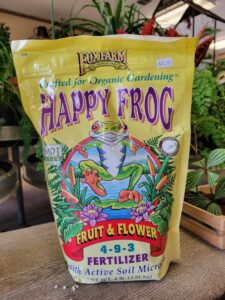
Roses: If you haven’t already sheared your roses back (by no more than 1/3), do so NOW (early September) and fertilize with a quality Rose fertilizer such as Maestro Gro Rose Glow Fertilizer (6-8-4) or Fox Farm’s Fruit and Flower (4-9-3). Remove and rake up any dropped or diseased leaves at this time to prevent re-infection from any diseases carried over from the summer. Remember, clean up, clean up, AND clean up! Keeping rose beds tidy can cut down on disease and insect problems year round! Avoid wetting the leaves when watering to avoid spread of disease by fungal spores. Use Bonide Rose Shield or Fertilome Triple Action Plus (organic) to control any fall insects or diseases. Keep mulch pulled back about 3” from the stems/trunks to prevent injury to the vascular system. Your roses will LOVE you for this!

Annuals: If your annuals are looking old and spent, it is time to pull them out and prepare the beds for the fall planting. Incorporate Happy Frog Soil conditioner or Heirloom Soils Leaf Mold Compost to refresh the soil, and add an organic fertilizer such as Happy Frog Fruit and Flower at time of planting. Remember, cool season Annuals grow and bloom in the winter, and they need nutrients, too! Pansies, in particular, are heavy feeders! Look for Snapdragons, Pansies, Dianthus, Flowering Kale and Cabbage, Violas, Alyssum and Lobelia later in the month.

Bougainvilleas: Our Bougies LOVE the FALL!!!! A light shaping, and fertilizing with NutriStar time-release Bougainvillea Fertilizer will get them on the road to top performance! We still have at least 3 months or more to enjoy them before they rest (depending on the weather!), so let’s get the most out of them! Protect them from temperatures below 50 degrees. Just bring them in if it is a quick cool snap, then set them back out in the sun to continue their show!
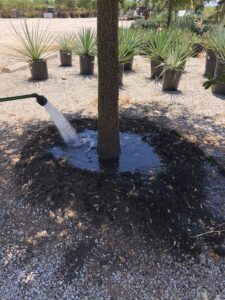
Trees and Shrubs: Keep up with the deep watering of newly planted trees and shrubs as we transition into fall. We still have some hot days ahead! Remember, DEEP watering develops a better root system than SHALLOW watering. Keep up the daily watering of newly planted trees until the temperatures cool and the deciduous trees lose their leaves. Newly planted trees and shrubs will require watering throughout the winter months to establish healthy root systems for spring growth. As temperatures cool, we monitor the weather to determine watering frequency. Remember, Live Oaks and Mexican White Oaks are semi-evergreen, and require more frequent watering than the deciduous trees in the winter, as their leaves continue to lose moisture, especially on windy days.
Established trees should be watered deeply at least to the drip line of the tree.

Pecan trees are filling out their hard shell with a kernel now. It is important to water adequately during this period to ensure full kernels at harvest. Any fruit trees which are still developing fruit, including Citrus, should be watched carefully for watering needs at this time as well. Stop in to get your MicroLife Citrus or Happy Frog Citrus and Avocado fertilizer for fall fertilization of citrus.




